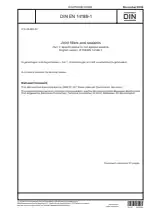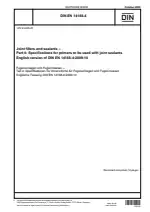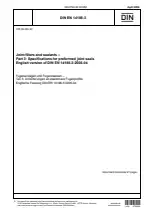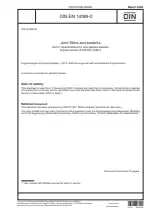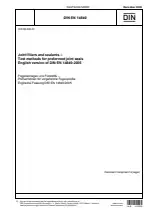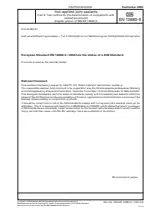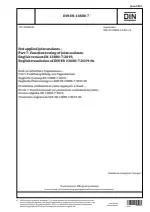Joint fillers and sealants - Part 1: Specifications for hot applied sealants
Also Known As:
The DIN EN 14188-1 standard outlines the requirements for hot-applied joint sealants in various applications. It focuses on both normal and fuel-resistant sealants used in roads, airfields, and other areas with traffic. The standard also applies to hot-applied normal sealants used in bituminous surfacing, as well as between bituminous surfacing and concrete pavements.
The purpose of this standard is to ensure the quality and performance of hot-applied sealants, which are essential for maintaining the integrity of joints and preventing the ingress of water and other materials. By specifying the requirements, the standard provides a basis for evaluating and selecting suitable sealants for different applications. This ensures that the sealants meet the necessary criteria for durability, adhesion, capacity to accommodate thermal and mechanical movement, fuel resistance, and other relevant factors.
Compliance with the DIN EN 14188-1 standard helps to promote consistency and reliability in the use of hot-applied sealants. It facilitates the comparison of products and supports the effective execution of construction projects. Furthermore, by meeting these specifications, sealant manufacturers can demonstrate the quality and performance of their products, ensuring they are fit for purpose.
| Descriptors | Asphalts, CE marking, Civil engineering, Classification, Concrete floors, Conformity assessment, Construction, Construction materials, Definitions, Expansion joints, Extenders, Heating, Hot use, Joint sealants, Joint sealings, Joints, Marking, Materials testing, Mechanical properties, Properties, Road construction, Sampling methods, Specification (approval), Testing, Thermoplastic polymers |
| ICS Codes | 93.080.20 - Road construction materials |
| Language(s) | English |
| File Size | 1.2 MB |

